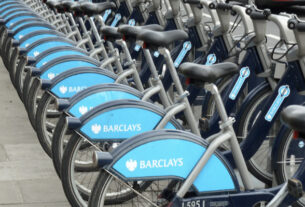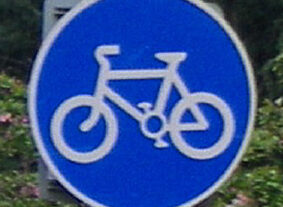Dear RCC members,
With all that we know about the impact of travel on our town, country, planet, environment, economy and health, schools should be right there in the business of preparing people for the future.
So we discussed doing some research into how schools deal with it.
There are seven schools inside 1.5km from my house: the Blessed Hugh Faringdon, the new Wren School and Southcote Primary are the closest; under 1 km, St Edward’s, St Mary and All Saints in Coley are fairly close, Prospect and Manor Primary are just a bit further away.
I contacted all of them by email to ask if they have a school travel plan.
Only one replied.
One.
The one I got was not exactly inspiring. There was not the slightest hint that they might attempt to educate their pupils and staff, in fact it identified a gulf in their knowledge, but had no suggestions to do anything about it.
The ‘action’ plan did not lead me to imagine there actually being any noticeable action. I have first hand experience of the travel to school impact on the surrounding streets.
In the nearby streets twice daily during the week in term time the impact is breathtaking. Here are some examples.
Between 08:00 and 09:00 Monday to Friday in term time, nobody can drive out of my street without a five minute wait at the end of my road. My neighbours are to be seen (most on their way to the town centre or the hospital where they work, 2-3 km away) queuing every morning.
During the school holidays there is no queue at all.
If I walk along Southcote Lane in the morning, parents leaving the primary school in Silchester Road leave the one way system created years ago outside the school to cope with the congestion and turn left, but they then usually pull a U-turn to avoid getting trapped by the bus lane camera and head back along Southcote Lane towards the Bath Road.
Where they pull the U-turn also happens to be the drop off point for The Blessed Hugh Faringdon School, where there are dozens of children walking to school who have no proper crossing and are frequently seen scampering across the road to avoid the cars.
The new Wren School also encourages its visitors to arrive using the Southcote Lane entrance, about 300m further down the road towards town, and the drop off scenario here is the same, but also has the complication of all the drivers leaving the other two schools to contend with.
Many parents (and at the moment dozens of contractors too, there are people still working on the site) pull into the residential side streets opposite, trapping residents trying to leave in their cars.
Along the Bath Road on the north side of the Wren School and The Blessed Hugh Faringdon is the new NCN422, a cross town cycle route just designed by Reading Borough Council. There is a slight problem, as it is on the north side of the road, and the schools are on the south side.
The Council did alter the crossings at Liebenrood Road just to the west, to permit people to cross on their bikes from north to south, but that only caters for people heading from the west, and to get to either school people on bikes should walk, as this is a narrow pavement, not a cycle path.
Of course the tiny number who do cycle don’t get off and push, so they learn at an early age that cycle routes in Reading are inadequate.
If they come from the east there is no crossing for the new school until they are well past it (it is the crossing I just mentioned). So there are all sorts of ways pupils make their way to the new school, making their own way across the roundabout where all the queuing parents and local residents are sat in their cars trying to get to work.
Why on earth RBC didn’t design the new NCN422 to cater for children cycling to the new school and the old one, I can’t imagine.
The signposted local cycle network Route 5 goes down Southcote Lane, but there isn’t any infrastructure, not even any paint; it is a road on which people can park their cars.
And on which hundreds of drivers are struggling with their cars on their commute, and of course there are staff heading to the schools in their cars, so any child cycling on this route will wonder why it is signposted as part of the network. This is not a quiet road!
The route heads south along a once quiet road to head towards Coley, but due to the new school that road is now a drop- off for the new school, and cycling past these cars is really hazardous. Passengers are often throwing open their doors without looking, and the drivers are then pulling off and trying to turn around to get back into the traffic on the busier road.
You need to be an extraordinarily perceptive, experienced and confident cyclist to ride on the road around here in the rush hour.
The cycle route passes within 100m of Southcote Primary School, and there is a quiet alleyway that links the two. Cycling is prohibited here, and to make damn sure no one ignores the no-cycling notice, there are heavy duty steel barriers to keep them from trying to ride through. I live 400m from that barrier.
My neighbour is 20m further away. When they expanded the school a couple of years ago, they built a smashing new car park for staff. Someone in my road avails herself of a spot there every day to park her high powered sports car.
She is so close that she can come home in her car for lunch. So she makes that 420m journey four times a day. Actually it is more like a 1000m journey – remember me saying the school has a one way system? She has to go to the far end of it to join the queue to get past the school, so she can get into the school car park.
I am sure it is quicker to walk. I walked many times when my kids were schooled there. We rode once, so I could leave my son and his bike at the school, and I could ride on to work. The head made such a fuss about it that my son was embarrassed in front of his peers, and never rode there again.
Why isn’t anyone making a fuss about an unnecessary car trip?
Happily children are welcome to cycle there, and there is a cycle parking shed, but it amazes me how far away it is from the actual building. It is on the far side of the car park, so those that have driven, park nearer than those that have ridden.
I haven’t been to see how many children currently cycle, I am hoping to do so when the school admin replies to my request to discuss the school travel plan.
All I can say for sure is that every school day is a nightmare on the streets of Southcote. And despite spending £450,000 on NCN422 that runs right through the area, and actually avoids all these schools, I only see a handful of people cycling along it, no more than I used to see cycling on the pavement before it was converted to shared use.
I asked the Council what they are planning to do, and it turns out they have been doing a fair bit (see appendix below).
But if the cycle network actually linked the schools themselves, if the plans for the new school put sustainable travel at the top of the agenda for anyone getting to school, if the schools all engaged their staff and pupils to discourage driving the way the primary school once discouraged my child from cycling, maybe we could make a difference.
As it is the school trip causes the most ridiculous environmental and societal problems almost without check, and almost totally needlessly.
Adrian Lawson, RCC Chairman
Appendix
Response from the transport department at Reading Borough Council (you will note it doesn’t mention anything about safe routes to schools for cyclists!)
As part of the Council’s Sustainable Modes of Travel Strategy, currently adopted under the Local Transport Plan (LTP3) (to be updated as part of LTP4), the Council are keen to encourage cycling and walking to school through ongoing initiatives, such as Bikeability and Modeshift STARS, as well as road safety awareness roadshows aimed at school children.
• Bikeability – The Council has secured funding to deliver the national cycle training scheme, Bikeability, in schools since 2009. The number of children participating in the scheme continues to grow year-on-year and is therefore well received by schools in the borough. The scheme aims to give children the skills and confidence to cycle safely, and independently, on different types of roads and junctions.
Reading’s initial Bikeability allocation for 2018/19 was 100 Level 1, 1001 Level 1/2 and 272 Level 3 places. However the Council has recently received confirmation that additional funding has been granted enabling 110 trainees to receive L1, 1450 L1/2 and 328 L3. Additional funding has also been granted for Bikeability Plus courses that will enable 350 children to receive Learn to Ride training.
• Modeshift STARS encourages schools across the country to join in a major effort to increase levels of sustainable and active travel in order to improve the health and wellbeing of children and young people. On completion of an application for Modeshift STARS, schools will automatically have a brand new national standard School Travel Plan.
The Heights and Moorlands Primary Schools are two schools which have achieved a bronze award in Modeshift STARS in Reading. The Heights School was nominated for the recent South East Modeshift STARS awards in London and received an award for ‘Reading STARS Primary School of the Year 2019’. We are continuing to encourage other schools to take part in the initiative as we have had lots of positive feedback from all those involved.
• Roadshows – The Council have supported the Louis Taylor, and Safe Drive Stay Alive roadshows which have been rolled out to schools across the borough for a number of years.
o Louis Taylor Primary School Road Safety Shows: These free shows are endorsed by the Department of Transport and incorporates the aims of the Government’s Road Safety Education’s Think Programme. For Key Stage 1, the programme consists of 3 themes, these being, 1) Know the Road (How to behave near Traffic), 2) Stop, Look, Listen and 3) Car Clever (In Car Safety).
For Key Stage 2, the programme consists of 4 themes these being 1) The Road Ahead (Pedestrian Safety), 2) Careful Crossing (Crossing the Road), 3) Ready to Ride (Cycle Safety) and 4) Car Wise (In Car Safety). Shows are very well received and we often have to turn schools away due to the limited spaces available.
o Safe Drive Stay Alive: Safe Drive Stay Alive is produced through an alliance of partner organisations who are all working to reduce death and injury on the roads. The events have drawn in schools and colleges from the area and neighbouring authorities such as Oxfordshire, Buckinghamshire Bracknell Forest Borough, West Berkshire and Slough Councils with well over 100,000 people now having attended shows since it started.
Partners involved in the programme include the police force, fire and rescue services, 19 local authorities and a host of volunteers and presenters talking very frankly about their personal experiences and tragedies and the dramatic effects of a road traffic crash. They participate in the hope that others will never have to experience the tragedy that has beset them and their families.


